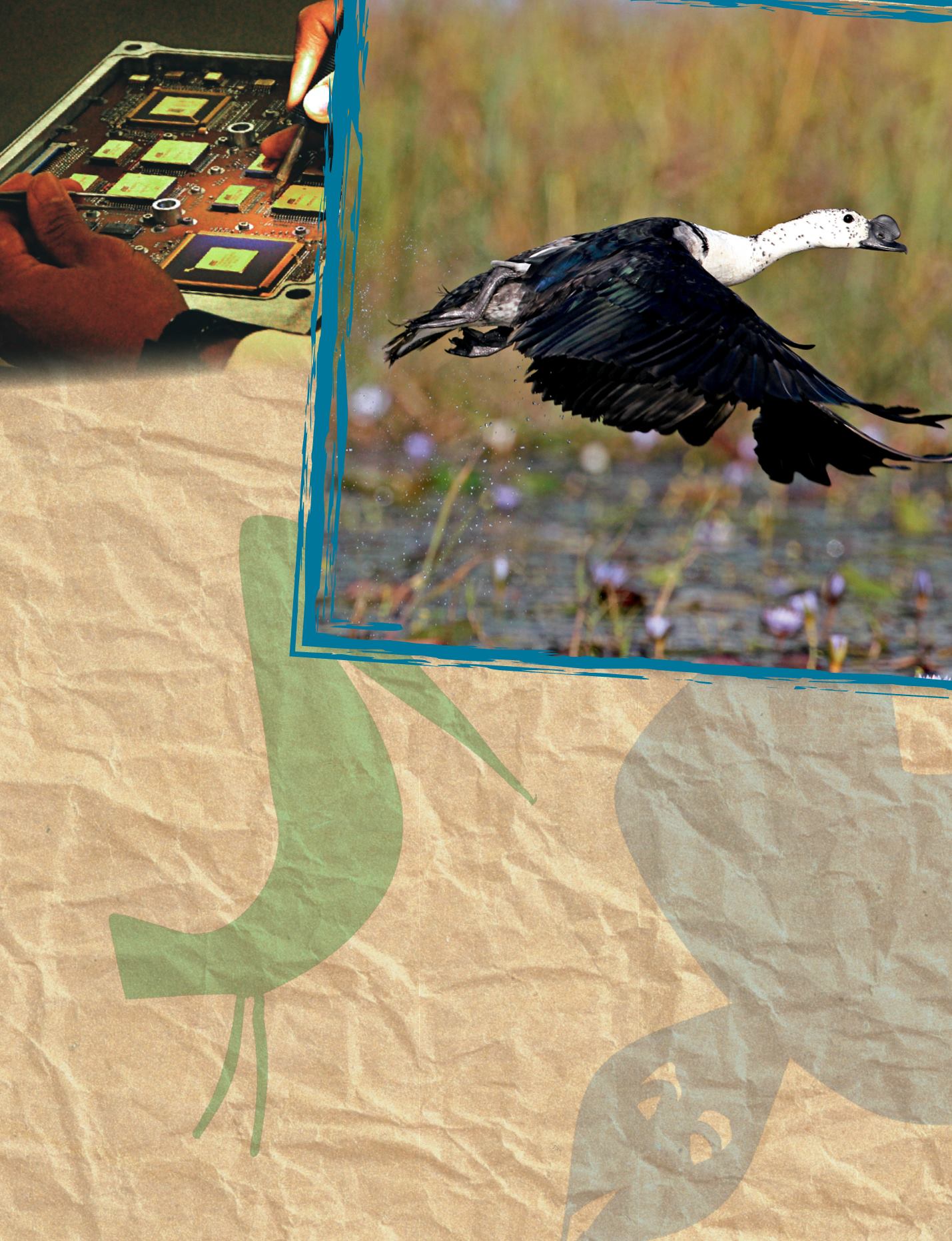
Keeping an eye on bird routes
F
or
ornithologists,
Africa
is
fascinating. It supports more than
2 500 species of birds, and is home to
24 families that are found nowhere else
on Earth. This huge diversity is due
in part to the wide range of habitats,
from deserts and tropical forests to
the rich waters of the Southern Ocean.
Unfortunately Africa is also economically
the poorest continent. Habitat is lost as
land is cleared, wildlife populations are
impacted by exploitation and pollution,
and native species struggle to compete
with invasive species introduced from
other parts of the world.
In the face of such threats, it is crucial
that we protect our birds because
of their immense cultural, spiritual
and economic value. Birds provide
pest control, plant pollination and
seed dispersal services, generate
tourism revenue and are sensitive
to environmental change, acting as
indicators of broader ecosystem health.
Knowing where birds go is crucial to
conserving them – how far they disperse,
where their breeding grounds are, and
how they use their environment. Since
the early 1990s, satellite telemetry
has been used to track individual birds
through the CLS-ARGOS system. Recent
advances with GPS technology give
positional data accuracy of a few metres,
and enable recording of heading, altitude
and speed.
Regular migrations
At the Percy FitzPatrick Institute of
African Ornithology, a DST/NRF Centre
of Excellence at the University of Cape
Town, we use satellite tracking to study
bird movements for a range of applied
projects.
Ducks and other waterfowl are
potential
vectors
for
bird-borne
diseases such as avian influenza, so
a study of satellite-tagged Egyptian
Geese is currently underway to better
understand their movements. Unlike
the northern temperate zones where
regular migrations are linked to strong
seasonal signals, duck movements in
sub-Saharan Africa appear to be driven
mainly by local variation in rainfall.
The iconic Southern Ground-Hornbill is
being studied at a much finer scale, with
the emphasis on identifying key habitats
in their large home ranges, some of
which exceed 100 km2. By using GPS-
transmitters, we are able to see exactly
where the group-living hornbills spend
their time. The Fitz hopes to use this
data to understand why some groups are
able to breed successfully almost every
year, whereas others seldom raise any
young.
i
Digital processing card forming part
of the equipment of the latest generation of
ARGOS4 being manufactured. It quadruples
system capacities.
Thales Alenia Space © J.D Dallet/Suds-Concepts
u
Movements of tropical waterfowl
such as this Knob-billed Duck are less
predictable than those in temperate
regions.
© Peter Ryan
78 - Sustainable Development in Africa & Satellites


